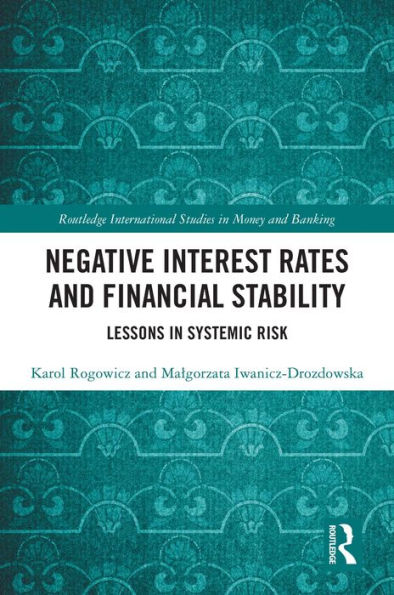This book sheds new light on a recently introduced monetary tool – negative interest rates policy (NIRP). It provides in-depth insight into this phenomenon, conducted by the central banks in several economies, for example, the Eurozone, Switzerland and Japan, and its possible impact on systemic risk.
Although it has been introduced as a temporary policy instrument, it may remain widely used for a longer period and by a greater range of central banks than initially expected, thus the book explores its effects and implications on the banking sector and financial markets, with a particular focus on potentially adverse consequences. There is a strong accent on the uniqueness of negative policy rates in the context of financial stability concerns. The authors assess whether NIRP has any – or in principle a stronger – impact on systemic risk than conventional monetary policy. The book is targeted at presenting and evaluating the initial experiences of NIRP policy during normal, i.e. pre-COVID, times, rather than in periods in which pre-established macroeconomic relations are rapidly disrupted or, specifically, when the source of the disruption is not purely economic in nature, unlike in systemic crisis.
The authors adopt both theoretical and practical approaches to explore the key issues and outline the policy implications for both monetary and macroprudential authorities, with respect to negative interest rate policy, thus the book will provide a useful guide for policymakers, academics, advanced students and researchers of financial economics and international finance.
This book sheds new light on a recently introduced monetary tool – negative interest rates policy (NIRP). It provides in-depth insight into this phenomenon, conducted by the central banks in several economies, for example, the Eurozone, Switzerland and Japan, and its possible impact on systemic risk.
Although it has been introduced as a temporary policy instrument, it may remain widely used for a longer period and by a greater range of central banks than initially expected, thus the book explores its effects and implications on the banking sector and financial markets, with a particular focus on potentially adverse consequences. There is a strong accent on the uniqueness of negative policy rates in the context of financial stability concerns. The authors assess whether NIRP has any – or in principle a stronger – impact on systemic risk than conventional monetary policy. The book is targeted at presenting and evaluating the initial experiences of NIRP policy during normal, i.e. pre-COVID, times, rather than in periods in which pre-established macroeconomic relations are rapidly disrupted or, specifically, when the source of the disruption is not purely economic in nature, unlike in systemic crisis.
The authors adopt both theoretical and practical approaches to explore the key issues and outline the policy implications for both monetary and macroprudential authorities, with respect to negative interest rate policy, thus the book will provide a useful guide for policymakers, academics, advanced students and researchers of financial economics and international finance.

Negative Interest Rates and Financial Stability: Lessons in Systemic Risk
272
Negative Interest Rates and Financial Stability: Lessons in Systemic Risk
272Related collections and offers

Product Details
| ISBN-13: | 9781000787825 |
|---|---|
| Publisher: | Taylor & Francis |
| Publication date: | 12/01/2022 |
| Series: | Routledge International Studies in Money and Banking |
| Sold by: | Barnes & Noble |
| Format: | eBook |
| Pages: | 272 |
| File size: | 9 MB |
